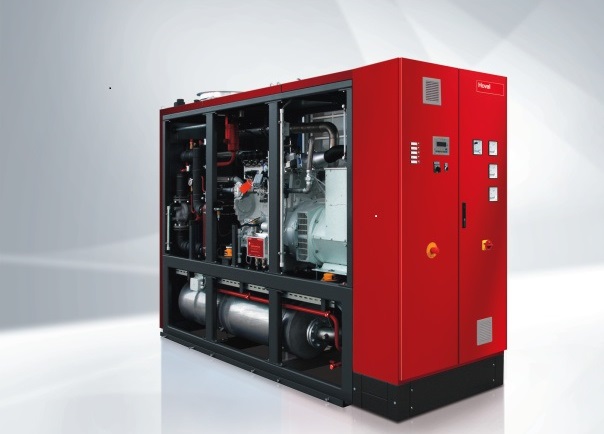Combined Heat and Power – CHP
Combined Heat and Power systems generate electricity from burning fossil fuels and capture the heat generated in the process for heating purposes. Although CHP burns fuel and releases CO2 it can work with high efficiency and therefore releases fewer greenhouse gases than remote fossil-fuel-powered electricity generation which usually wastes the heat produced as a by-product of generation (and also wastes some electricity in transmission to your site).
CHP can be used where there is a significant year-round need for heating, in addition to the electricity generated.
A CHP engine normally burns fossil fuels. Some units are designed to run on biomass, although this will require additional skilled supervision and contribute towards air pollution.
A CHP engine burns fuel and emits NO2 which exacerbates problems of air pollution. Air quality is an increasing concern in cities like London where nearly all boroughs exceed EU limits for acceptable concentrations of NO2.
The uncomfortable reality is that a CHP installation usually wastes heat in summer. One solution is to store surplus summer heat in a Thermal Bank™ for use in winter.
District heating – Heat Networks
Use of a CHP engine requires scale to be economic. CHP is therefore often suggested as the heat source for district heating. For district heating based on transmitting high water temperatures through a pipe distribution network, there is the risk of high heat losses to the ground, unless the piping is well insulated. For this reason it is frequently suggested that lower distribution temperatures should be used and this can work well if the buildings being heated are adapted to lower temperature heat distribution systems (by being well insulated and using underfloor heating).
Fifth Generation District Heat Networks
The logical conclusion is to move to a Fifth Generation District Heating Network that uses ambient temperature distribution and heat pumps in each building to concentrate the heat available. A major additional benefit of this approach is that it is possible to reverse the heat pumps if any individual building needs cooling: so heating or cooling can be provided as needed within one integrated system.
Can CHP be used to save carbon emissions?
CHP used to be specified in a bid to reduce carbon emissions. However, with the continuing decarbonisation of the grid, heat pumps – which avoid using combustion – will usually cause smaller carbon emissions from the power stations than a CHP plant issues on site. Heat pumps also make no contribution to the increasingly urgent problem of urban air pollution.
Contact ICAX
We prefer to work in conjunction with architects and M&E consultants from the earliest stage to ensure that there is a clear understanding of how we can help to deliver a sustainable building with a high carbon offset.
Please email enquiries to
or give us a ring on 020 7253 2240.
Hear what Professor Sir David MacKay says:
"I think that growth of gas-powered combined heat and power would be a mistake. Such combined heat and power is not green: it uses fossil fuel, and it locks us into continued use of fossil fuel. Given that heat pumps are a better technology, I believe we should leapfrog over gas-powered combined heat and power and go directly for heat pumps."


